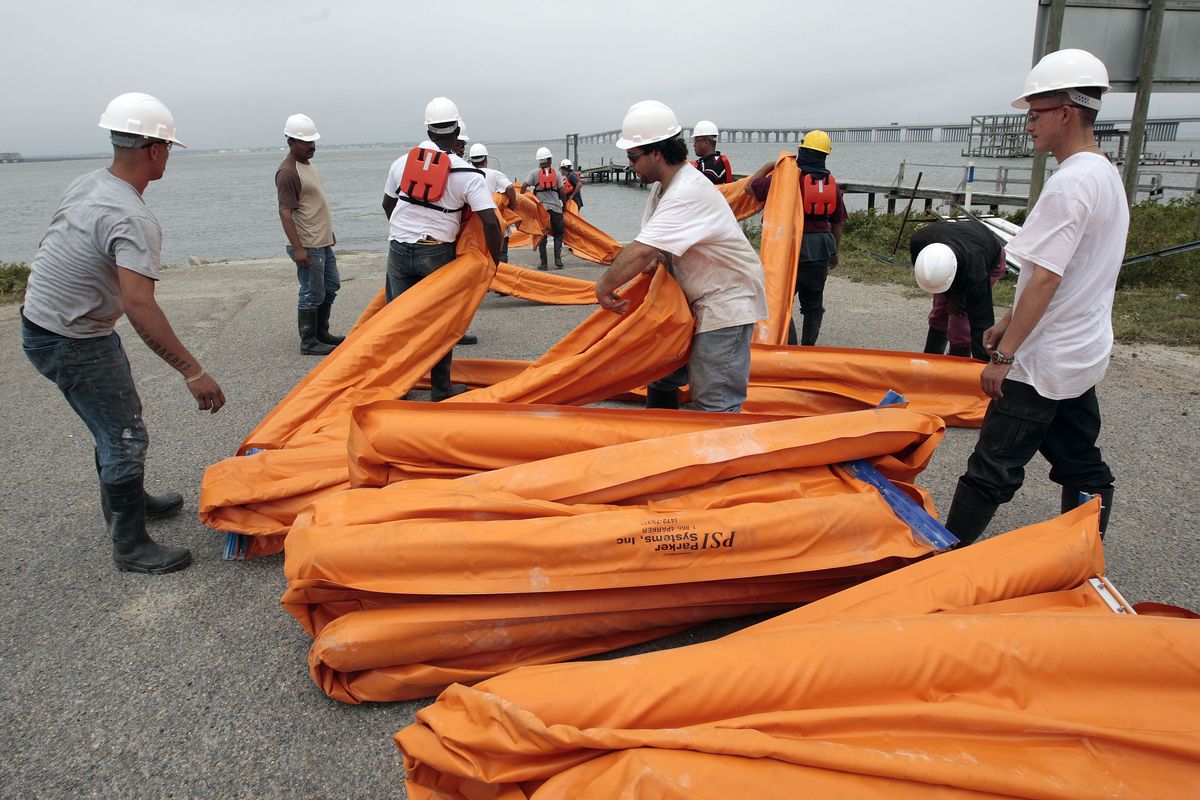BP didn’t prepare for major spill, papers show

MOUTH OF THE MISSISSIPPI RIVER – British Petroleum once downplayed the possibility of a catastrophic accident at an offshore rig that exploded, causing the worst U.S. oil spill in decades along the Gulf Coast and endangering shoreline habitat.
In its 2009 exploration plan and environmental impact analysis for the well, BP suggested it was unlikely, or virtually impossible, for an accident to occur that would lead to a giant crude oil spill and serious damage to beaches, fish and mammals.
At least 1.6 million gallons of oil have spilled so far since the April 20 explosion that killed 11 workers, according to Coast Guard estimates. One expert said Friday that the volume of oil leaking from the well nearly 5,000 feet below the surface could actually be much higher, and that even more may escape if the drilling equipment continues to erode.
“The sort of occurrence that we’ve seen on the Deepwater Horizon is clearly unprecedented,” BP spokesman David Nicholas told the Associated Press on Friday. “It’s something that we have not experienced before … a blowout at this depth.”
Amid increased finger-pointing Friday, efforts sputtered to hold back the giant oil spill seeping into Louisiana’s rich fishing grounds and nesting areas, while the government desperately cast about for new ideas for dealing with the growing environmental crisis. President Barack Obama halted any new offshore drilling projects unless rigs have new safeguards to prevent another disaster.
The seas were too rough and the winds too strong to burn off the oil, suck it up effectively with skimmer vessels, or hold it in check with the miles of orange and yellow inflatable booms strung along the coast.
The floating barriers broke loose in the choppy water, and waves sent oily water lapping over them.
“It just can’t take the wave action,” said Billy Nungesser, president of Louisiana’s Plaquemines Parish.
The spill – a slick more than 130 miles long and 70 miles wide – threatens hundreds of species of wildlife, including birds, dolphins and the fish, shrimp, oysters and crabs that make the Gulf Coast one of the nation’s most abundant sources of seafood. Louisiana closed some fishing grounds and oyster beds because of the risk of oil contamination.
BP’s 52-page exploration plan for the Deepwater Horizon well, filed with the federal Minerals Management Service, says repeatedly that it was “unlikely that an accidental surface or subsurface oil spill would occur from the proposed activities.”
And while the company conceded that a spill would impact beaches, wildlife refuges and wilderness areas, it argued that “due to the distance to shore (48 miles) and the response capabilities that would be implemented, no significant adverse impacts are expected.”
Robert Wiygul, an Ocean Springs, Miss.-based environmental lawyer and board member for the Gulf Restoration Network, said he doesn’t see anything in the document that suggests BP addressed the kind of technology needed to control a spill at that depth of water.
“The point is, if you’re going to be drilling in 5,000 feet of water for oil, you should have the ability to control what you’re doing,” he said.
While the amount of oil in the gulf already threatened to make it the worst U.S. oil disaster since the Exxon Valdez spill in Alaska in 1989, one expert emphasized that it was impossible to know just how much oil had already escaped and that it could be much more than what BP and the Coast Guard have said.
Even at current estimates, the spill could surpass that of the Valdez – which leaked 11 million gallons – in two months.
Ian R. MacDonald, an oceanography professor at Florida State University, said estimates from both Coast Guard charts and satellite images indicate that 8 million to 9 million gallons had spilled by April 28.
“I hope I’m wrong. I hope there’s less oil out there than that. But that’s what I get when I apply the numbers,” he said.
Coast Guard Rear Adm. Mary Landry brushed off such estimates that suggested the rate of the leak was five times larger than official estimates.
“I would caution you not to get fixated on an estimate of how much is out there,” Landry said. “The most important thing is from Day One we stood corralling resources from a worst-case scenario working back.”
As of Friday, only a sheen of oil from the edges of the slick was washing up at Venice, La., and other extreme southeastern portions of Louisiana. But several miles out, the normally blue-green gulf waters were dotted with sticky, pea- to quarter-size brown beads with the consistency of tar.
High seas were in the forecast through Sunday and could push oil deep into the inlets, ponds, creeks and lakes that line the boot of southeastern Louisiana. With the wind blowing from the south, the mess could reach the Mississippi, Alabama and Florida coasts by Monday.
In Louisiana, officials opened gates in the Mississippi River hoping a flood of fresh water would drive oil away from the coast. But winds thwarted that plan, too.
For days, crews have struggled without success to activate the well’s underwater shutoff valve using remotely operated vehicles. They are also drilling a relief well in hopes of injecting mud and concrete to seal off the leak, but that could take three months.